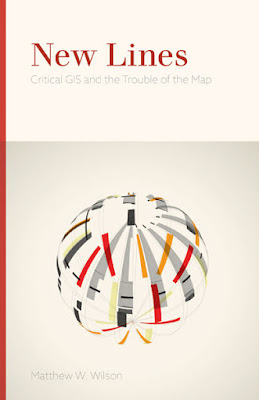Theorizing the Geoweb: AAG NYC 2012
Following our session, Situating Neogeography, at the AAG meetings in Washington DC in 2010, Agnieszka Leszczynski has led the effort on organizing a session, Theorizing the Geoweb, for the 2012 AAG meetings in New York. Thanks, Agnieszka!
Call for Papers: Theorizing the Geoweb
Association of American Geographers Annual Meeting
24-28 February 2012
New York, NY
Organizers:
Agnieszka Leszczynski, Dept. of Geography, University of Washington
Matthew W. Wilson, Dept. of Geography, University of Kentucky
Geographers have given much attention to the ‘geoweb’ in recent years. Many engagements to date have either sought to describe or index geoweb instances, or have emphasized the data aspects of the phenomenon (e.g., volunteered geographic information or VGI; data quality/accuracy), their attendant data practices (e.g., crowdsourcing; user-generation of content), and increasingly, the social implications of new geographic information technologies (e.g. new privacy concerns). In 2009, we invited contributions to a session on situating these developments, with the intention of identifying the contexts – beyond the technological – from which geoweb phenomena emerge, and in which they circulate and are operationalized. In Washington, D.C., scholars effectively situated the geoweb within political economies; historical commodity chains and histories of production; and non-Western geographical contexts. Now, two years further into a (intra)disciplinary geoweb research agenda, we probe scholars to propose interventions for theorizing the geoweb. By ‘theorizing’, we ask, for example, what are the appropriate theories (of subjectivity, materiality, spatiality, discourse, use, labour, etc.) for engaging the geoweb, or that ought to be brought to bear upon our extant engagements? The purpose of theorizing the geoweb, beyond describing or ‘situating’ it, is to help us, collectively, apprehend the geoweb as a phenomenon (or series of phenomena) rather than as a set of named individual instances (such as Google Earth or Foursquare). For example, rather than enumerating the geoweb’s constituent objects, how do we theorize the nature of participating technologies?
Furthermore, beginning to theorize the geoweb is inherent to our ability to formulate a ‘critical’ programme for the geoweb – a disciplinary project that recognizes, as does Critical GIS, the range and multiplicity of practices and subjectivities that constitute, and are constituted by, geographic information technologies; and one that emphasizes and reminds us that geographic information technologies are always plagued by the polemics of representation and of knowledge politics. This task is made more difficult in the age of the geoweb given the sheer range, number, and diversity of participating technologies.
Geographers have begun to theoretically engage the geoweb; these engagements include theories of “conspicuous mobility” (Wilson 2011), “prosumption” (production/consumption; Haklay et al 2008), DigiPlace (Zook and M. Graham 2007), and software sorting (S. Graham 2005). We seek to broaden the scope and number of these interventions by inviting the submission of abstracts to this session on ‘Theorizing the Geoweb.’
Please contact co-organizers Agnieszka Leszczynski (agal@uw.edu) and Matthew W. Wilson (matthew.w.wilson@uky.edu) by August 15th if you are interested in participating in this paper session. In your email, please propose a paper title and include a working AAG abstract (250 words).
Works Cited
Haklay M, Singleton A, and Parker C. 2008. Web mapping 2.0: the Neogeography of the GeoWeb. Geography Compass, 2: 2011-2039.
Graham S. 2005. Software-sorted geographies. Progress in Human Geography 29 (5), 562-580.
Wilson M. 2011. Location-based services, conspicuous mobility, and the location-aware future. Paper presented at the Association of American Geographers Annual Meeting, Seattle, WA, 12-16 April
Zook MA, and Graham M. 2007. Mapping DigiPlace: geocoded Internet data and the representation of place. Environment and Planning B: Planning and Design 34, 466-482.


Comments
Post a Comment